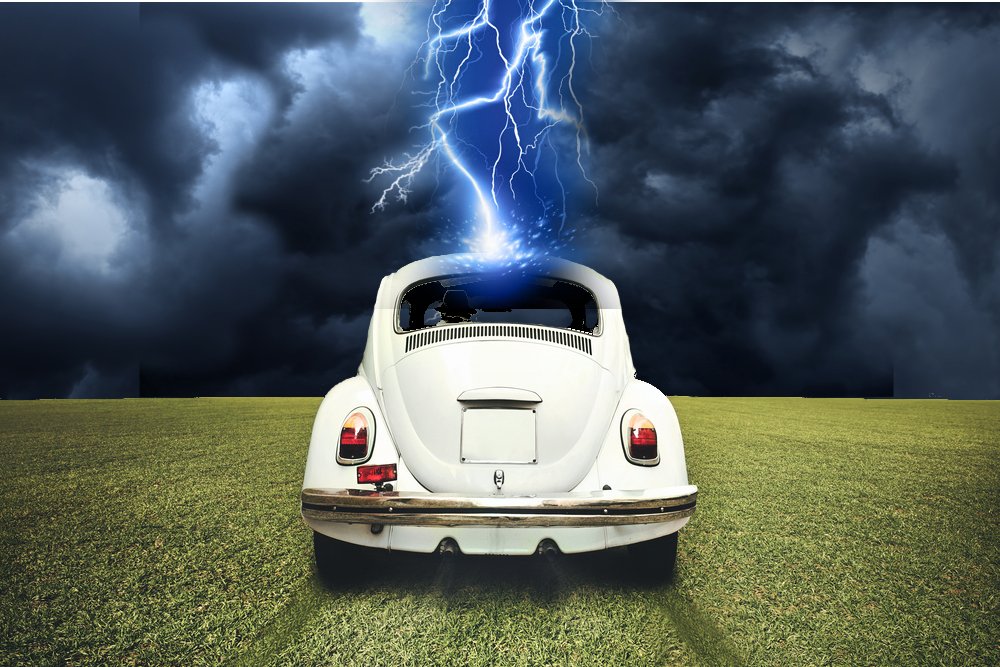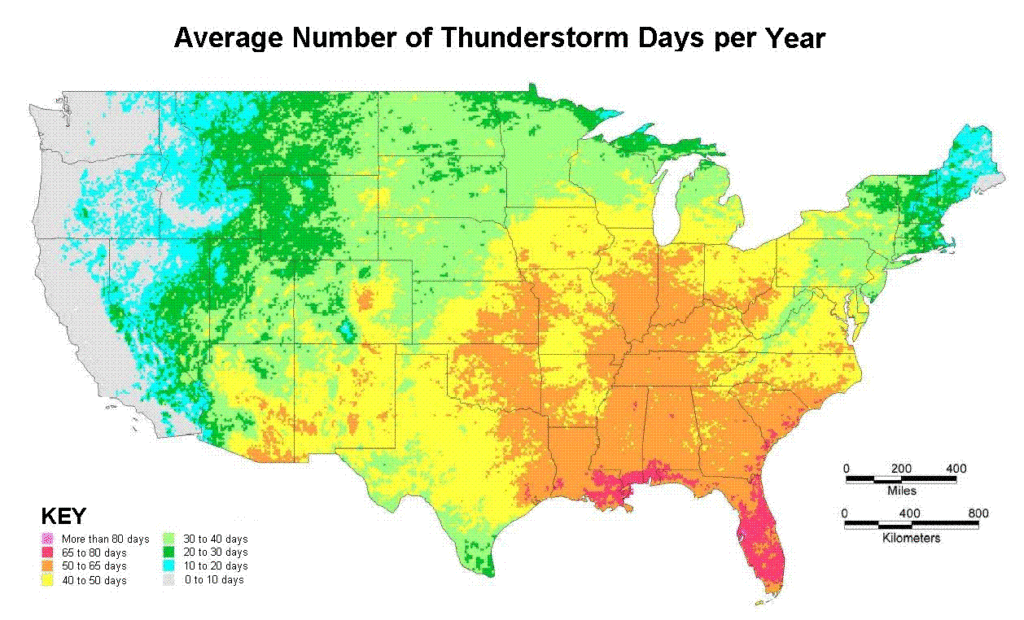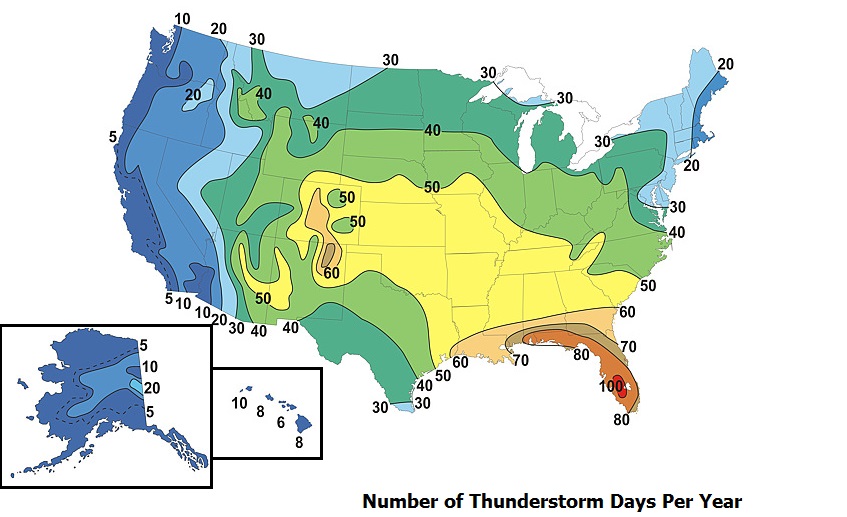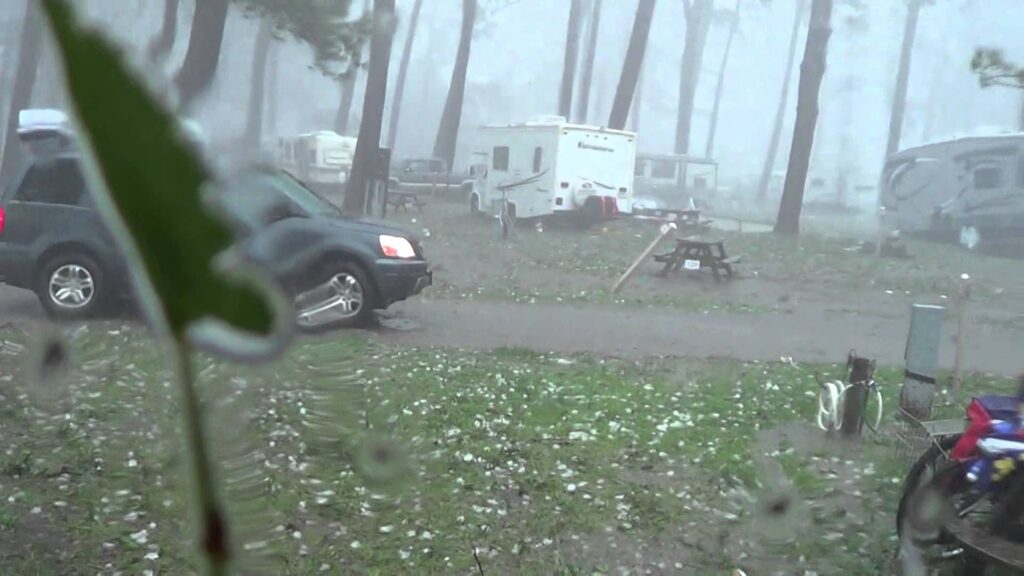Can you actually spend the night in the roof tent in any weather? How is it in a strong wind? Doesn’t that get extremely hot in the roof tent in summer? And does the roof tent also protect against thunderstorms?
At the latest after you get into an extreme weather phenomenon for the first time, you will deal with these or similar questions. However, it is often useful if you don’t just start researching then, but know beforehand what you can roughly expect.
Table of Contents
Thunderstorm & Roof Top Tent
Imagine you suddenly wake up in your cozy roof top tent at night to a loud noise that you cannot sort properly at first. Only when you see the brilliant flash that divides the night sky do you realize that a thunderstorm is approaching your roof tent pitch. Is that so good?
Probably the most dramatic and probably also the most dangerous of all weather phenomena on your roof top tent holiday is the thunderstorm. Especially in midsummer, the frequency of thunderstorms and the strength of the thunderstorms that occur are particularly high. That’s why you shouldn’t take this lightly.
Fortunately, these days thunderstorms can be predicted fairly accurately. A sudden and spontaneous thunderstorm that wakes you up does not usually have to be on the agenda of your rooftop tent vacation.
Can’t you just sit out the thunderstorm in the roof top tent? Or should you stay completely away from the thunderstorm region? How do you recognize your thunderstorm? And how far is it actually? Let’s take a closer look at these and other questions.

Are you safe in the roof top tent during a thunderstorm?
Basically, the answer is first of all: NO
The roof top tent does not form a Faraday cage or does not form a sufficient one to offer you protection in the event of a lightning strike. The Faraday cage, as we know it in cars, is a closed shell made of an electrical conductor. A commercial roof tent will not be able to meet these criteria.
You are safe in a closed car even during a thunderstorm, so not in a roof top tent.

How do you recognize an approaching thunderstorm?
An approaching thunderstorm is not only recognizable by the dark clouds and the roaring thunder. There are many more little things that can predict a thunderstorm:
- the temperature drops sharply
- the air pressure drops
- the birds stop chirping
- the mosquitoes become more aggressive
- large (mostly dark) clouds pile up
- or simply by looking at the good old weather report
At the sea or in flat land, you can see a thunderstorm approaching from afar. In the mountains this is usually more difficult and can quickly bring a nasty surprise within a very short time.
How far is the thunderstorm?
When you see lightning, there is thunder at the same time. But since the light reaches you faster than the sound, it takes a correspondingly long time, depending on the distance, before the thunder can be heard.
If the distance between lightning and thunder is one second, then the thunderstorm (or this lightning!) Is 1125 feet away from you. If there are 10 seconds between lightning and thunder, then there are already 2.11 miles between you and the lightning.
With this formula you can roughly determine how far away the thunderstorm is. However, you should also keep in mind that a thundercloud can be 1.2 miles or wider and does not move slowly. So if the lightning bolt is a mile away from you and your roof tent, then the next one can be with you in seconds.
With this second counting method, you can assess quite well whether the thunderstorm is moving towards you or away from you. The formula is really worth gold for that!
Where is the thunderstorm heading?
You can not just count the seconds to determine where the thunderstorm is going. I like to use the app for my smartphone for this – but there are also numerous other online tools.
In this app, thunderstorms are shown as colored dots. The larger the points, the larger the thunderstorm cells. You can also see pretty much in the timeline below where the thunderstorm is coming from, when it is with you and where it is going.
I am always very enthusiastic about how precise these predictions are. Just last week the app predicted the thunderstorm for me to the minute and also exactly when I could go back to sleep.
However, you shouldn’t rely on technology alone. A combination of the seconds-counting tactic and the satellite display should protect you from unexpected thunderstorms.

Frequency of thunderstorms
In summer you can often expect a little thunderstorm. In the months of May to August, the days are longest and therefore the sunshine is most intense. Most of the thunderstorms can be expected during these months.
Put simply, a thunderstorm is caused by rising, moist, warm air masses that form a thundercloud. These air masses meet colder air masses at great heights – and there is a bang!
By the way: a heat thunderstorm usually lasts 0.5 – 1.5 hours. So even if a thunderstorm falls on your weekend of all places, in which you wanted to be out with the roof tent, the hops and malt are not lost. It is very rare that there is a thunderstorm all night and the thunderstorm rages directly over your roof top tent at the same time.
You can therefore go out with the roof top tent even if there is a thunderstorm warning. However, you should be very careful: as soon as a thundercloud is visible at your location and / or the thunderstorm is audible, switch to the car to be on the safe side and sit out the thunderstorm. The great thing about it: You can watch the thunderstorm live from the front row!
Personally, this has happened to me twice in three years full-time in the roof tent. In all other cases, the thunderstorm passed me and I was able to sleep relatively calmly.

Where are the safest places to park your car?
Is there a thunderstorm warning in your region? Then you should, if possible, observe a few basic rules when choosing a parking space for your roof top tent mobile.
Don’t choose a parking space…
Rule number 1: don’t be the highest point.
No matter what you do and where you are. As long as you are outside of your car, you should definitely not be the highest point in the area. Lightning seeks the path of least resistance to discharge. And that’s what you or your roof tent definitely don’t want to be.
So don’t park in open fields and in wide corridors!
A parking space next to a single tree or a small group of trees does not make sense either. Not only the lightning strike itself is dangerous, but also the so-called potential funnel.
In the event of a lightning strike, not only very high punctual voltages arise at the point of impact, but also a funnel-shaped potential difference that decreases towards the outside. This means that the lightning strike itself is very dangerous, but the circular area around the strike can also be fatal.
You shouldn’t necessarily stand in the forest with your roof tent either. Because a thunderstorm is often accompanied by strong winds. So if lightning spares you, you certainly don’t want to be a victim of falling branches or snapping trees.
Do’s when choosing a parking space
On the other hand, it makes sense to stand near a built-up area. If your pitch is 300-300 feet from the nearest house, then you are most likely not the highest point and lightning is more likely to hit a lightning rod than your roof tent.
An underpass or a small tunnel can also be great places to endure a thunderstorm. Nothing should happen to you there – at least not from a lightning strike.
Regardless of the choice of parking space, you always have a safe place in the car (as long as the windows and doors are closed).

What else should you pay attention to?
If there is a thunderstorm or a thunderstorm is approaching, you should also pay attention to the following things:
No contact with metallic objects
Metal literally attracts lightning. So you shouldn’t wear any metallic objects on your body if you are outside during a thunderstorm.
In addition, no metallic objects should be standing or lying around your car. It is better to stow them in the car long before the thunderstorm.
Make sure to also remember your ladder from the roof top tent, if it is made of metal!
Thunderstorms often bring storms and hail with them
A thunderstorm often means storm and sometimes even hail. In the event of a thunderstorm warning, you should make sure that no objects can fly away and, ideally, park your vehicle somewhere safely. This may save you a few hail damage.

What do I personally do in the event of a thunderstorm?
Did you catch a thunderstorm day on your roof tent vacation? Congratulation! Personally, I really celebrate it extremely every time I see a thunderstorm up close.
Now, I don’t want to encourage you to purposely drive into a thunderstorm. There is also a residual risk if you endure the thunderstorm in your car.
But if it does happen and you get caught in a thunderstorm during your rooftop tent adventure: then enjoy the show! I always sit in my car, make myself a cup of tea or open a cold drink beforehand and look forward to the spectacle. Of course, when the thunderstorm is near me, I don’t leave the car and wait until it’s far enough before I go back to sleep.

